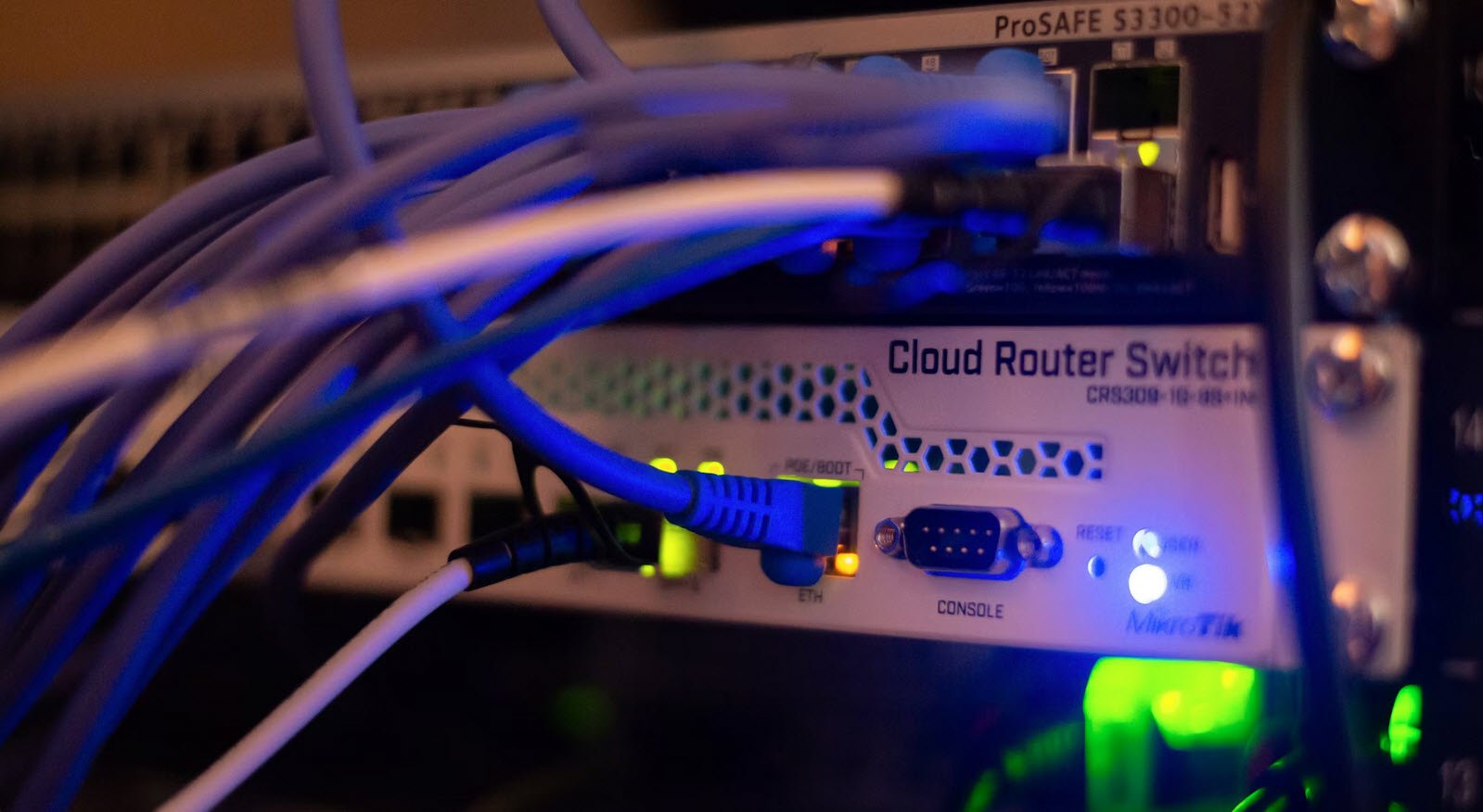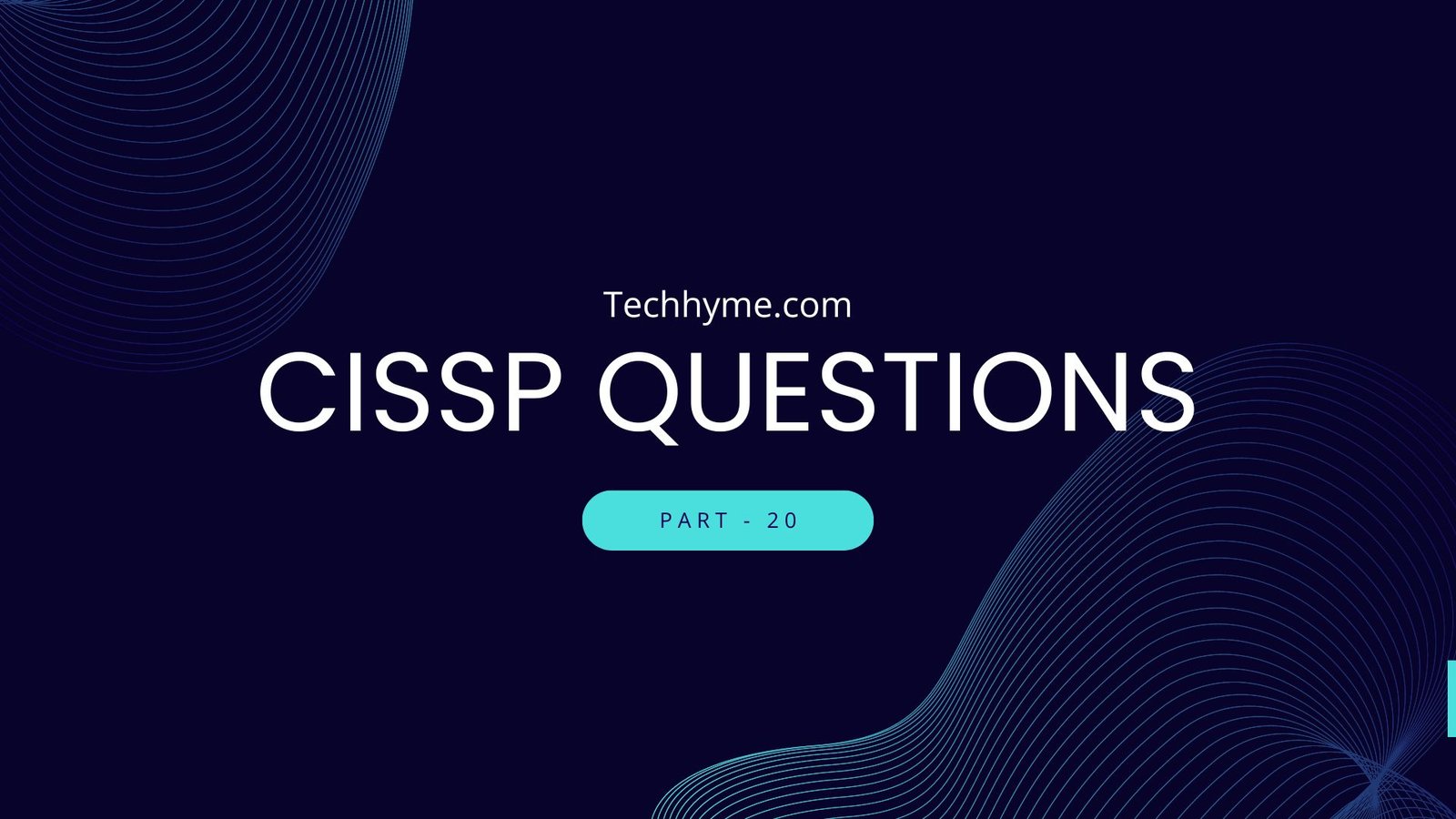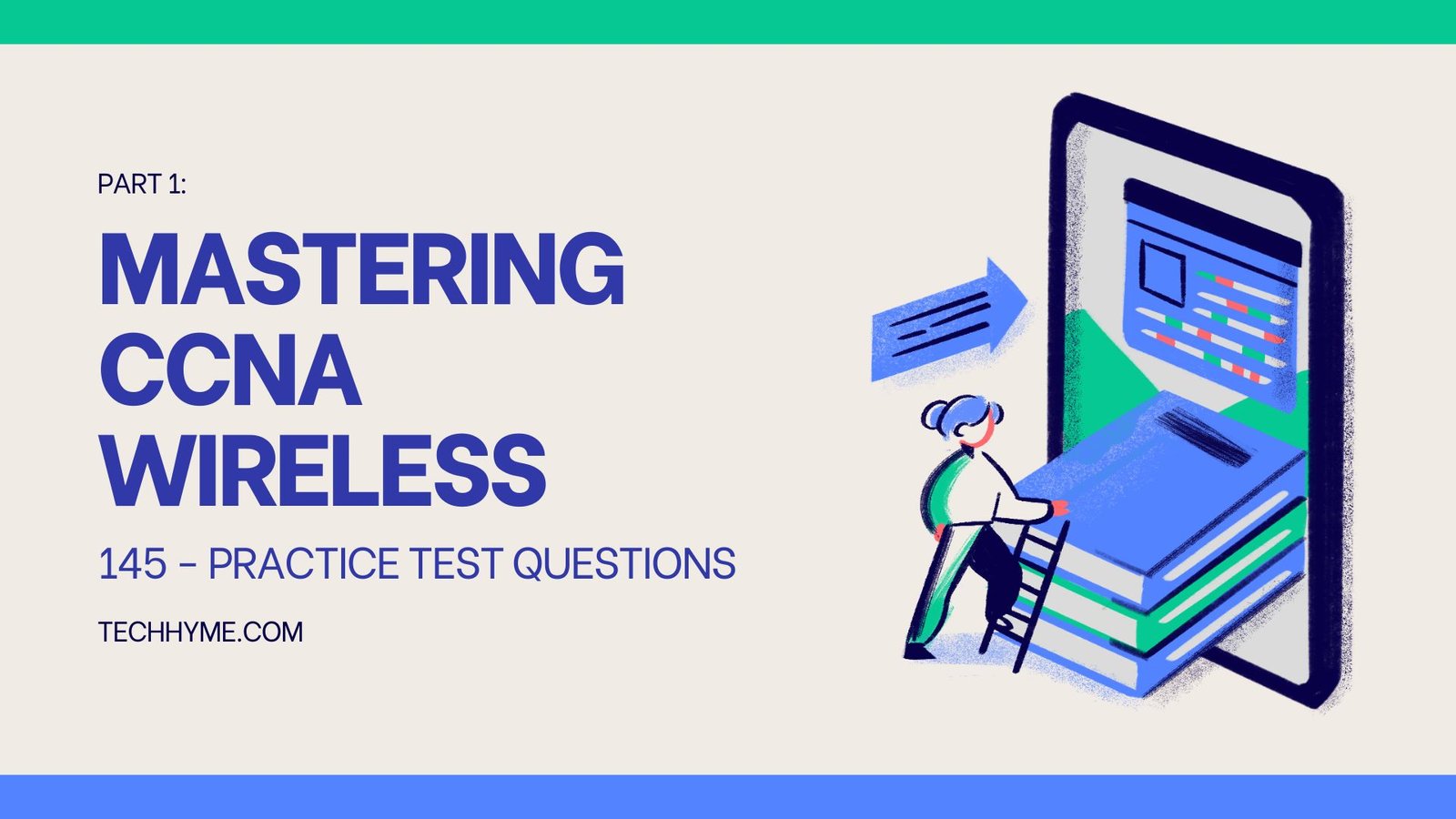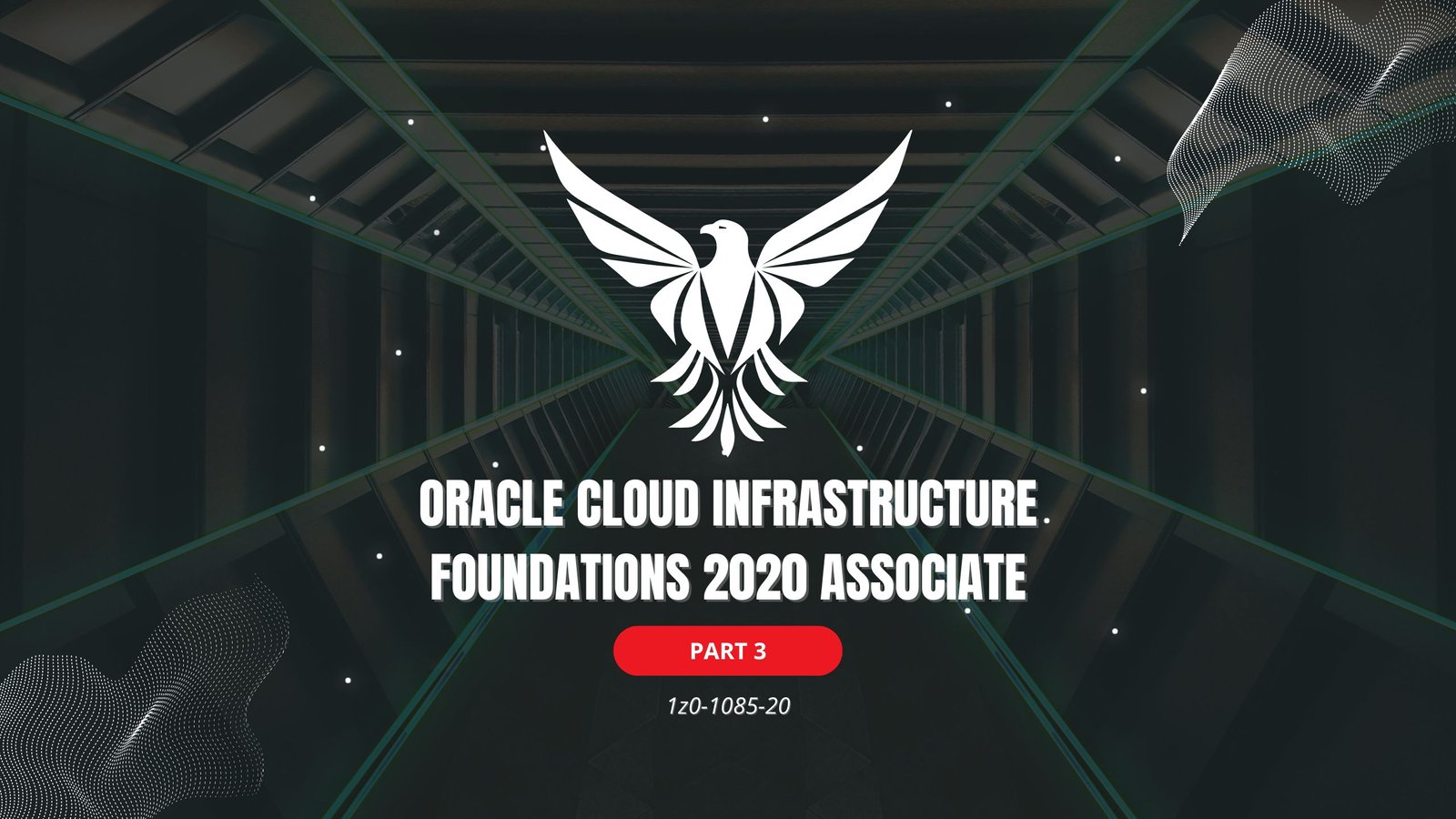
The CCIE Certification is the highest level of achievement for network professionals, certifying an individual as an expert or master. Cisco Systems has since become an unrivaled worldwide leader in networking for the Internet. Its networking solutions can easily connect users who work from diverse devices on disparate networks. Cisco products make it simple for people to access and transfer information without regard to differences in time, place, or platform.
The below listed questions are intended to help you continue on your exciting path toward obtaining your CCIE (Cisco Certified Internetwork Expert) certification. Before looking these questions, it is important to know the basic concepts of CCNA and CCNP.
- Cisco Certified Internetwork Expert – CCIE – Part 1
- Cisco Certified Internetwork Expert – CCIE – Part 2
- Cisco Certified Internetwork Expert – CCIE – Part 3
- Cisco Certified Internetwork Expert – CCIE – Part 4
- Cisco Certified Internetwork Expert – CCIE – Part 5
- Cisco Certified Internetwork Expert – CCIE – Part 6
- Cisco Certified Internetwork Expert – CCIE – Part 7
- Cisco Certified Internetwork Expert – CCIE – Part 8
- Cisco Certified Internetwork Expert – CCIE – Part 9
- Cisco Certified Internetwork Expert – CCIE – Part 10
- Cisco Certified Internetwork Expert – CCIE – Part 11
- Cisco Certified Internetwork Expert – CCIE – Part 12
- Cisco Certified Internetwork Expert – CCIE – Part 13
- Cisco Certified Internetwork Expert – CCIE – Part 14
- Cisco Certified Internetwork Expert – CCIE – Part 15
- Cisco Certified Internetwork Expert – CCIE – Part 16
- Cisco Certified Internetwork Expert – CCIE – Part 17
- Cisco Certified Internetwork Expert – CCIE – Part 18
- Cisco Certified Internetwork Expert – CCIE – Part 19
These articles covers everything you need to pass the CCIE Routing and Switching written exam. Each article contains a set of testing questions along with their answer and explanation.
This article covers: Technological discussion and configuration examples.
1. Which of the following NAT table entries indicates a static inside IP address to globally routable address translation?
- Simple translation entry
- Extended translation entry
- Global translation entry
- Inside translation entry
Answer – A
Explanation – The single translation entry indicates a static inside IP address to a globally routable IP address translation
2. Which of the following best describes an inside network?
- The network of another company
- The set of networks that are subject to IP translation
- The side of the network using global addresses
- The Internet
Answer – B
Explanation – The inside network is a network where addresses need to be translated to enter another outside network such as the Internet.
3. NAT cannot perform which of the following?
- Enable a private network using unregistered IP addresses to access another outside network.
- Provide the ability to reuse addresses already in use on the Internet.
- Replace the functions provided by a DHCP server.
- Provide IP address translation for merged internetworks.
Answer – C
Explanation – NAT will support certain DHCP server traffic but does not replace any functions of a DHCP server.
4. A Class A IP address scheme can provide a maximum of how many individual hosts with unique IP addresses on the inside network?
- 254
- 16,777,214
- 255
- None of the above
Answer – B
Explanation – A properly subnetted Class A network can provide up to 16,777,214 unique IP addresses for individual hosts.
5. Which of the following is a problem that NAT and PAT are designed to address?
- Assigning a DHCP address
- Assigning an IP address to a border router
- Translating nonroutable IP addresses to legal routable addresses
- Resolving IP addresses to fully qualified domain names
Answer – C
Explanation – NAT and PAT provide functions that allow a nonroutable IP address to be translated into a routable IP address. Some of NAT’s and PAT’s functions allow for fewer routable addresses than there are nonroutable addresses.
6. Which of the following describes the router that should be configured with NAT? (Choose the two best answers.)
- A spoke router on a hub-and-spoke network
- The router that is the demarcation point between the inside network and the outside network
- The local bridging router between two subnets
- The router closest to the border of a stub domain
- TCP load distribution
- Static NAT
- One-on-one mapping
- Overloading
- File Transfer Protocol (FTP)
- Network Time Protocol (NTP)
- Telnet
- IP multicast
- Internet Control Message Protocol (ICMP)
- Trivial File Transfer Protocol (TFTP)
- All of the above
- 160 bytes
- 100KB
- 1MB
- 64KB
- all
- enable
- Do not use a syntax
- default
- Global configuration mode
- Interface configuration mode
- User EXEC mode
- Any of the above
- Static NAT
- Dynamic NAT
- Overlapping NAT
- Port mapping
- show ip nat statistics
- show ip nat configuration
- show ip nat all
- show ip nat translation
- NAT only
- PAT only
- Both NAT and PAT
- None of the above
- IP
- IPX
- AppleTalk
- IP and IPX
- show ip pat
- show ip pat statistics verbose
- show ip pat all
- show ip pat configuration
- RFC 1911
- IEEE 802.11
- RFC 1631
- ANSI X311
- Dynamically connected
- Directly connected
- Statically connected
- Sending packets
- Routing table updates
- BOOTP
- IP multicast
- DNS zone transfers
- None of the above
- Delay in switching paths.
- All IP address translation pools can be changed only on the NAT border router.
- Hidden end-to-end IP addresses from applications.
- Loss of traceability.
- None of the above.
- 80 Most Important Network Fundamentals Questions With Answers
- 100 Most Important SOC Analyst Interview Questions
- Top 40 Cyber Security Questions and Answers
- Top 10 React JS Interview Theory Questions and Answers
- CISSP – Practice Test Questions – 2024 – Set 20 (53 Questions)
- Part 2: Exploring Deeper into CCNA – Wireless (145 Practice Test Questions)
- Part 1: Mastering CCNA – Wireless (145 Practice Test Questions)
- [1z0-1085-20] Oracle Cloud Infrastructure Foundations 2020 Associate MCQ Questions – Part 3
- [1z0-1085-20] Oracle Cloud Infrastructure Foundations 2020 Associate MCQ Questions – Part 2
- [1z0-1085-20] Oracle Cloud Infrastructure Foundations 2020 Associate MCQ Questions – Part 1
Answer – B, D
Explanation – The router closest to the edge of the network that separates the inside network and the outside network is the router that should be configured with NAT or PAT.
7. Which of the following types of NAT configurations would you implement if you were mapping all your inside IP addresses to one globally routable address?
Answer – D
Explanation – By enabling NAT overloading, you can map more than one inside IP address to a single IP address by using port information as adifferentiator.
8. Which of the following traffic types is not supported by NAT?
Answer – D
Explanation – IP multicast is the only traffic type listed that is not supported by NAT.
9. Approximately how much DRAM on the NAT border router is used during each NAT translation?
Answer – A
Explanation – The NAT border router uses about 160 bytes per translation. This means that about 10,000 translations, which is far more than the average router should need to translate, will use about 1.6MB of DRAM.
10. Enabling which syntax used with the set ip porthandler command configures all well-known TCP ports except for the ports specifically assigned?
Answer – D
Explanation – The set ip porthandler default command configures all well-known TCP ports except for the ports specifically assigned a handler.
11. In which of the following router configuration modes should you use the command ip nat inside source static 10.2.2.2.6 200.4.4.7?
Answer – A
Explanation – IP NAT configuration additions and change commands are configured in the global configuration mode. The ip nat inside or ip nat outside commands enable NAT on the interface they are applied on the router.
12. The command ip nat inside static 10.1.3.2 200.4.2.5 is an example of which type of NAT translation?
Answer – A
Explanation – The ip nat inside static 10.1.3.2 200.4.2.5 command is an example of a manually configured static NAT table entry.
13. Which of the following commands can be used to verify the NAT configuration? (Choose the two best answers.)
Answer – A, D
Explanation – The three commands that can be used to verify the NAT configuration are show ip nat translation, show ip nat translation verbose, and show ip nat statistics.
14. Which of the following protocols can be enabled on a Cisco 765 router? (Choose all that apply.)
Answer – B
Explanation – The Cisco IOS for the 765 uses a SET/CLEAR command set typically found in switches and does not support NAT. PAT is the only address translation protocol supported by the Cisco 700 series of routers.
15. NAT is used to translate which types of protocol addresses?
Answer – A
Explanation – NAT only translates IP addresses and uses TCP and UDP ports to create unique IP addresses. It does not support IPX or AppleTalk.
16. Which of the following commands can be used to monitor PAT?
Answer – A
Explanation – The command show ip pat shows the statistical and configuration information for PAT.
17. Which of the following defines the NAT protocol?
Answer – C
Explanation – The NAT protocol is defined in the Internet standard Request For Comments 1631 document, titled “The IP Network Address Translator (NAT).”
18. When looking at a routing table, what does the S mean?
Answer – C
Explanation – Statically connected routes are identified in the routing table with an S.
19. Which of the following traffic types is supported by NAT?
Answer – E
Explanation – None of the above traffic types is supported by NAT.
20. Which of the following is not a disadvantage of using NAT?
Answer – B
Explanation – The ability to change the global IP address pool on only the NAT border router is a great feature, not a disadvantage. This allows for the address pool to be changed without any manual configuration of any other host on the inside network.








